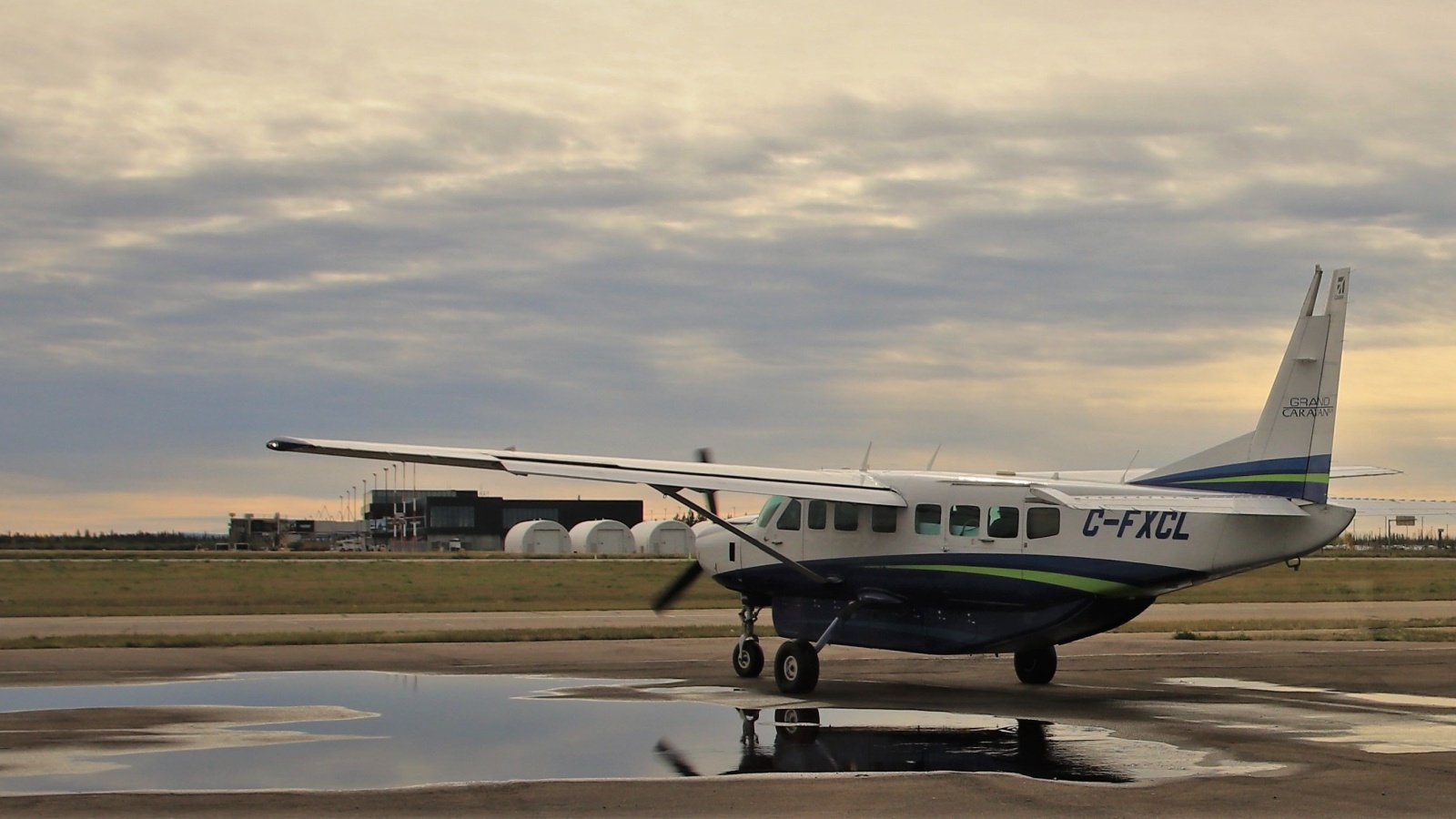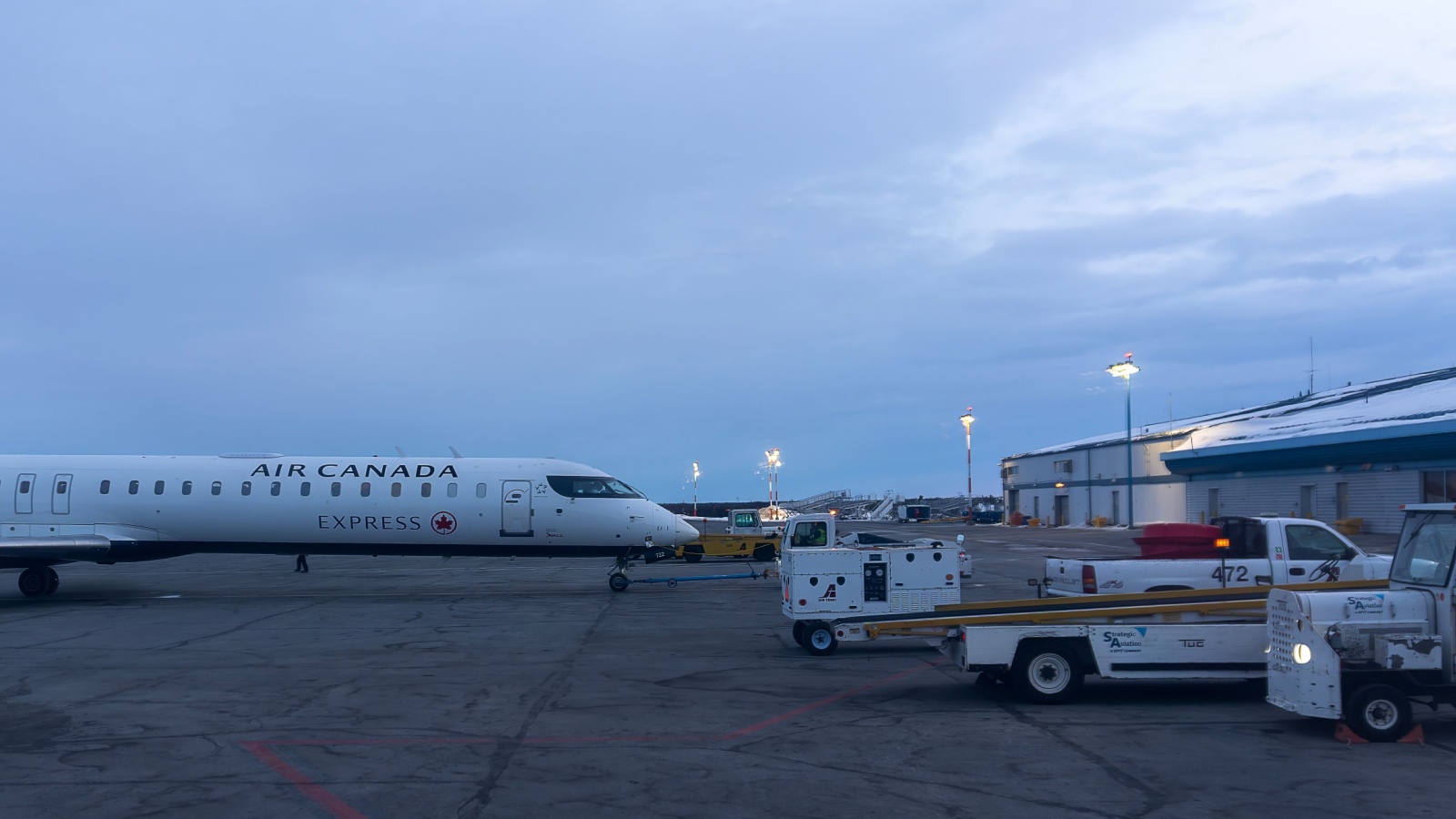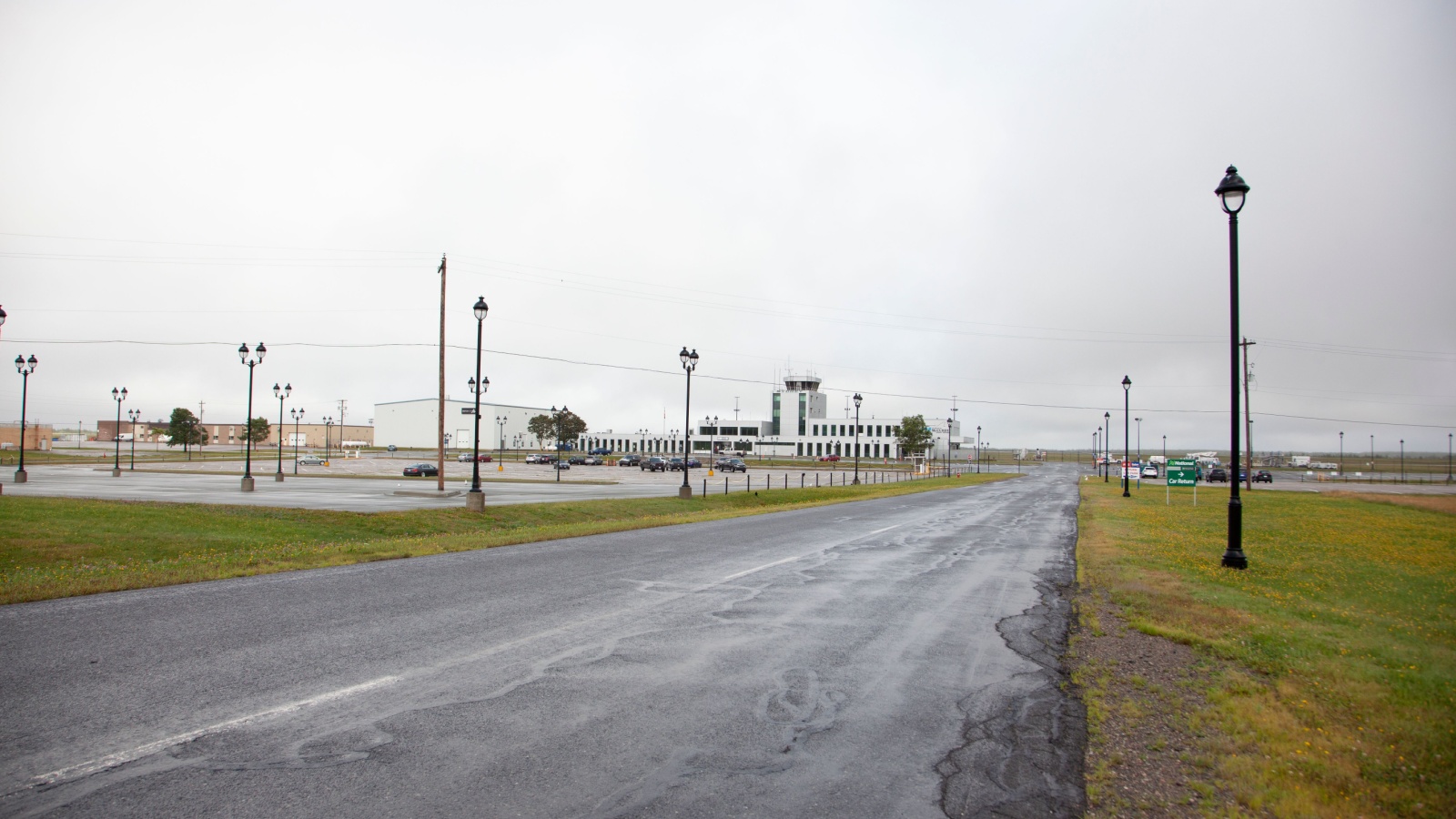Canada’s vast geography makes small regional airports vital lifelines for many communities. Yet, rising maintenance costs, declining passenger numbers, and government funding challenges mean several could soon face closure. For travelers, this would mean longer drives to major hubs, reduced connectivity, and fewer options for affordable flights. Here are 21 small Canadian airports that could soon close:
Prince Rupert Airport, British Columbia

Serving the North Coast of British Columbia, Prince Rupert Airport is crucial for residents and industries reliant on air travel. Yet with declining passenger traffic and the high costs of maintaining a remote facility, its future is uncertain. Airlines have cut routes, leaving locals with fewer options, and the airport authority has openly discussed funding struggles. If it were to close, residents would be forced to rely on longer, less reliable connections by ferry or road, and for an isolated city dependent on trade and tourism, the closure would deal a serious economic blow.
Stephenville International Airport, Newfoundland and Labrador

Stephenville International once served as a hub for military operations and international flights, but today it struggles to remain operational. Located on Newfoundland’s west coast, the airport faces dwindling passenger numbers as travelers increasingly drive to larger hubs like St. John’s or Deer Lake. Attempts to attract new airlines have had limited success, and maintenance costs are ballooning. Community leaders have warned of the devastating impact closure would have on local tourism and emergency medical flights. Without significant investment, Stephenville risks becoming another casualty of shrinking regional air service in Atlantic Canada.
North Bay Jack Garland Airport, Ontario

North Bay’s Jack Garland Airport has been a vital link for Northern Ontario, but with declining commercial flights, it now relies heavily on military and cargo operations to survive. Local officials have voiced concerns that without steady passenger traffic, the airport’s long-term viability is in jeopardy. Subsidies have helped, but rising operating costs outpace revenues, and a closure would isolate residents further, forcing them to drive hours to Sudbury or Toronto. For a city that markets itself as a regional hub, losing its airport would weaken both economic development and community connectivity.
Charlo Airport, New Brunswick

Charlo Airport has long been a source of debate in northern New Brunswick. While essential for medical transport and charter services, its commercial passenger flights have dwindled, leaving the airport struggling financially. Officials warn that without consistent airline partnerships, sustaining operations is nearly impossible. For surrounding communities like Campbellton, closure would mean losing a key transportation option in an already underserved area. At the same time, residents would face long drives to Moncton or Bathurst just to catch a flight. Charlo’s uncertain future underscores the challenges facing small regional airports across Atlantic Canada.
Thompson Airport, Manitoba

Serving as a gateway to northern Manitoba, Thompson Airport plays a vital role in connecting remote First Nations communities to essential services. Yet despite its importance, the airport faces ongoing financial strain. High operational costs, aging infrastructure, and reliance on limited passenger traffic make it vulnerable to closure. While cargo and medevac flights remain steady, commercial passenger demand has fallen. If Thompson were to shut down, residents in surrounding regions would be forced into even greater isolation, limiting healthcare access and economic opportunities.
Gander International Airport, Newfoundland and Labrador

Once world-famous as a transatlantic refueling stop, Gander International now struggles to attract steady passenger traffic. With airlines consolidating routes through St. John’s, Gander has seen a sharp decline in flights, leaving its future uncertain. The airport’s operational costs are immense, with staff and infrastructure built for a bygone era of heavy traffic. Community leaders argue that Gander remains vital for emergency landings and tourism; however, without new funding or airline commitments, closure could be looming. Losing Gander would erase an iconic part of aviation history while leaving central Newfoundland with fewer air links.
Fort McMurray International Airport, Alberta

Despite being called “international”, Fort McMurray’s airport has seen traffic plummet since the oil downturn. Once booming with workers and global connections, it now operates at a fraction of its former volume. The high costs of maintaining an international facility with limited demand have sparked concerns about sustainability. While it still supports charter flights to remote work camps, passenger numbers remain low, but i closures or scaling back occur, residents and businesses will face major travel disruptions. For a city tied to resource development, the airport’s uncertain future reflects the volatility of the local economy.
Windsor International Airport, Ontario

Windsor’s proximity to Detroit makes it a tricky airport to sustain. Many travelers opt to cross the border for cheaper U.S. flights, resulting in fewer passengers and reduced revenue for Windsor International. Efforts to attract low-cost carriers have helped, but not enough to guarantee long-term stability. Officials warn that competition, combined with rising operational costs, could eventually threaten closure. Losing the airport would impact southwestern Ontario’s connectivity and tourism, while forcing travelers into longer commutes. Windsor’s case highlights how cross-border dynamics can make even well-situated airports vulnerable in Canada’s competitive aviation market.
Saint John Airport, New Brunswick

Saint John Airport has long struggled to maintain regular passenger service, with many airlines cutting back routes due to low demand. Located in a region where Moncton often captures more traffic, Saint John faces steep competition and operational challenges. While it remains important for business and tourism, its declining role raises concerns about long-term sustainability. Closure would mean a loss of convenience for locals, who would need to drive to Moncton or Fredericton for flights. The airport’s uncertain future reflects broader struggles for regional airports in Canada’s Atlantic provinces.
Kamloops Airport, British Columbia

Serving the interior of British Columbia, Kamloops Airport has seen fluctuating passenger traffic in recent years. While tourism helps sustain it, the competition from Kelowna International Airport, just 90 minutes away, makes survival difficult. Airlines often prioritize Kelowna for new routes, leaving Kamloops with fewer options and declining revenue. Rising costs of maintaining the airport have prompted concerns about financial sustainability. A closure would hurt local businesses and tourism, forcing residents to drive further for flights. Kamloops’ struggles show how smaller airports often lose out to larger, nearby competitors in Canada’s air travel landscape.
Brandon Municipal Airport, Manitoba

Brandon Municipal Airport has long been the pride of southwestern Manitoba, but its passenger numbers remain modest compared to nearby Winnipeg. Airlines have struggled to maintain consistent service, with many routes cut over the years. Rising operational costs and limited revenue put pressure on the city to subsidize the airport. While it still plays an important role for medevac and charter flights, its viability as a commercial hub is shaky. If closure were to happen, residents would face longer commutes, while the region’s agricultural businesses would lose a key transportation option.
Goose Bay Airport, Newfoundland and Labrador

Goose Bay Airport once thrived as a military and international hub, but today it struggles to maintain relevance. Located in a remote part of Labrador, it faces declining passenger traffic and rising operational costs. While military and cargo operations still use the facility, commercial flights have dwindled, raising questions about its long-term sustainability. Locals depend on Goose Bay for essential medical and travel needs, meaning closure would be devastating for residents spread across Labrador. Without renewed investment or government support, the airport could become another casualty of shrinking regional air service in Canada.
Sault Ste. Marie Airport, Ontario

The Sault Ste. Marie Airport is a critical lifeline for northern Ontario, but its future has become increasingly uncertain. Passenger demand has declined over the years, and airlines often prioritize larger hubs like Sudbury or Thunder Bay. While the airport supports medevac, cargo, and flight training, its ability to sustain regular commercial routes is under threat. Rising maintenance costs and declining revenues put pressure on local authorities to keep it afloat, and its closure would isolate the community further, forcing residents into lengthy drives to larger cities for basic air travel.
Yellowknife Airport, Northwest Territories

Despite being the busiest airport in the Northwest Territories, Yellowknife’s future is not guaranteed. Passenger numbers have declined in recent years, and the high costs of maintaining such a northern facility weigh heavily on the territorial budget. While the airport is vital for medical transport, mining, and tourism, it relies on a limited number of carriers that sometimes reduce or cut back routes. A closure, or even a scaling back of operations, would leave much of the North disconnected from the rest of Canada. Yellowknife’s challenges illustrate the fragile nature of maintaining essential air service in remote regions.
Sydney/J.A. Douglas McCurdy Airport, Nova Scotia

Sydney Airport is Cape Breton’s gateway to the rest of Canada, but its passenger volumes remain too low to ensure financial stability. Larger airports in Halifax siphon much of the traffic, leaving Sydney to struggle with inconsistent airline partnerships. The airport authority has lobbied for more federal support, warning that without it, maintaining services will be nearly impossible. Closure would be a devastating blow to Cape Breton’s tourism economy, which depends heavily on air travelers. For locals, it would mean longer drives and reduced access to critical healthcare and business opportunities.
Fort St. John Airport, British Columbia

Serving northeastern B.C., Fort St. John Airport has long depended on oil and gas traffic to sustain operations. But as the energy sector slowed, so did passenger volumes, putting financial strain on the airport. Airlines have reduced flights, and competition from nearby airports adds further challenges. While it remains important for medevac and cargo, maintaining passenger service is increasingly costly. A closure would cut off one of the North’s most important links to southern Canada, making travel more difficult for both residents and businesses that depend on regular, reliable connections.
Bathurst Airport, New Brunswick

Bathurst Airport has faced years of uncertainty as passenger numbers steadily declined. Airlines frequently cut routes, leaving residents with few options and forcing many to drive to Moncton or Miramichi for flights. Despite being an important hub for northern New Brunswick, financial pressures have mounted, with the local community struggling to justify subsidies. Closure would not only inconvenience travelers but also hinder regional economic growth. Bathurst’s airport underscores the harsh reality that without steady airline commitments, many small Canadian airports cannot survive the shifting economics of modern air travel.
Grande Prairie Airport, Alberta

Grande Prairie Airport once thrived as an essential hub for oil and gas workers, but passenger numbers have dipped with the slowdown in the energy industry. Airlines have scaled back routes, leaving the airport with limited service, and the rising costs of operation and competition from Edmonton International Airport make its long-term outlook shaky. Local officials argue that Grande Prairie remains critical for medevac and regional business, but financial sustainability is a constant challenge. Without stronger support or increased passenger traffic, this northern Alberta hub could face significant cutbacks or even closure.
Dawson City Airport, Yukon

Dawson City Airport is a seasonal hub, essential for connecting tourists and locals to the Yukon’s Klondike region. But with limited passenger traffic outside peak tourism months, it struggles to remain viable year-round. The high costs of maintaining a northern facility, combined with its small runway and limited infrastructure, raise questions about its future. Closure would isolate Dawson further, forcing longer drives to Whitehorse for flights. For a community that relies heavily on tourism, the loss of its airport would harm local businesses and make the Klondike less accessible to travelers.
Sept-Îles Airport, Quebec

Sept-Îles Airport serves Quebec’s North Shore, connecting resource-based communities to southern Canada. But like many regional airports, it faces declining traffic and rising costs. Airlines have scaled back flights, leaving locals with fewer options and higher fares. While essential for mining and medevac operations, the airport’s passenger services remain financially fragile. A closure would be a huge setback for the North Shore, forcing long drives on remote roads just to reach other hubs. Without new investment, Sept-Îles risks becoming another regional facility pushed to the brink of survival.
Terrace-Kitimat Airport, British Columbia

Located in northwestern B.C., Terrace-Kitimat Airport is critical for serving resource industries and remote communities. Yet, fluctuating passenger numbers and competition from larger regional hubs have put financial pressure on the facility. Airlines have reduced flight schedules, leaving residents and businesses with fewer options. Maintaining operations in such a rugged and weather-challenged environment is costly, and without strong airline partnerships, sustainability remains uncertain. A closure would deal a blow to both the local economy and regional connectivity, isolating communities that already face long travel times to larger urban centers.
21 Products Canadians Should Stockpile Before Tariffs Hit

If trade tensions escalate between Canada and the U.S., everyday essentials can suddenly disappear or skyrocket in price. Products like pantry basics and tech must-haves that depend on are deeply tied to cross-border supply chains and are likely to face various kinds of disruptions
21 Products Canadians Should Stockpile Before Tariffs Hit
